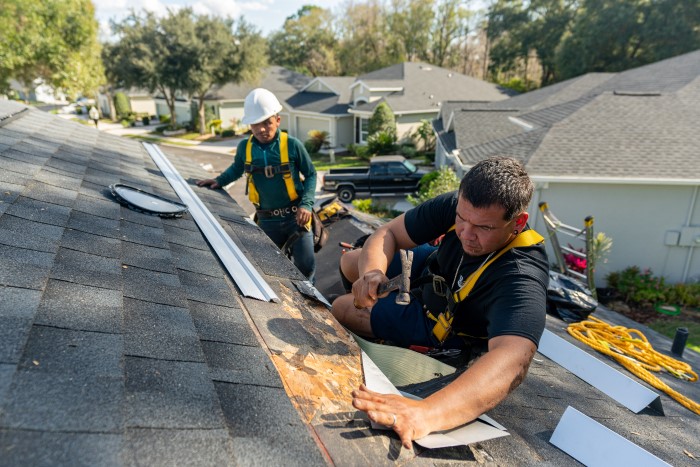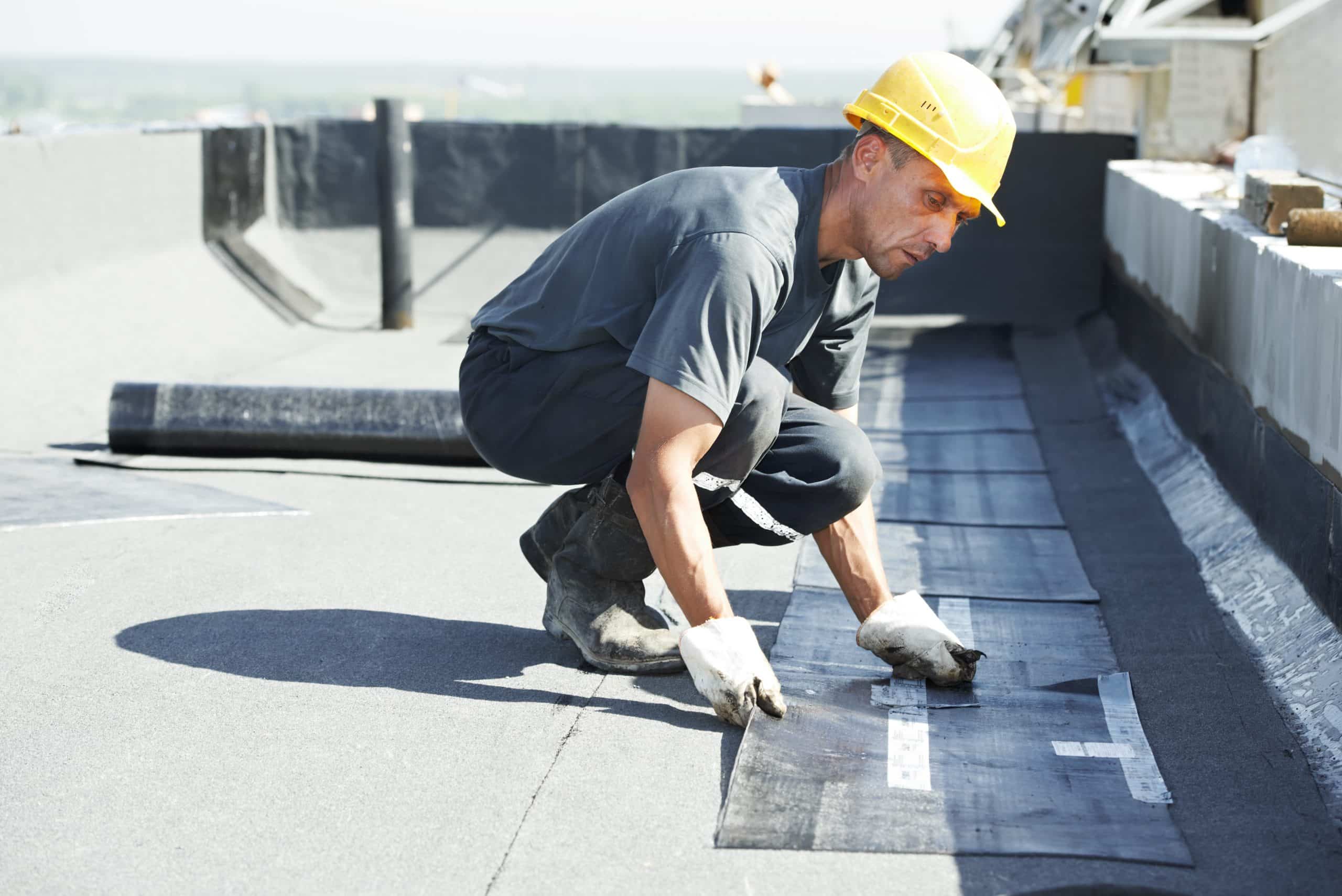Roofing Oahu: Expert Roofer for Your Oahu Home
Comprehending the Different Types of Roofs: A Comprehensive Overview for Homeowners
In the world of homeownership, picking the proper roofing style is a choice that lugs significant effects for both capability and aesthetic charm. With an array of choices-- varying from the traditional gable to the modern flat-- each type presents distinct benefits and challenges that ought to line up with the home owner's environmental factors to consider and certain demands. Recognizing these differences not only aids in making an educated option but also influences long-lasting maintenance and energy effectiveness. As we explore the complexities of different roof covering kinds, it comes to be evident that dimension does not fit all; the ideal option might shock you.
Gable Roofings
Gable roofs, identified by their triangular shape, are amongst one of the most popular roofing styles due to their simpleness and efficiency in losing water and snow. This layout features 2 sloping sides that meet at a ridge, permitting efficient water drainage and decreasing the threat of water build-up. The high pitch frequently linked with gable roofing systems boosts their capacity to handle hefty precipitation, making them suitable for various environments.
Along with their sensible benefits, gable roof coverings provide aesthetic versatility. They can be adapted to numerous building styles, from conventional to contemporary homes. The style can likewise fit extra attributes such as dormer home windows, which boost all-natural light and air flow in the attic room area.
Additionally, saddleback roofs provide sufficient space for insulation, adding to power effectiveness. Home owners can choose from a selection of roofing products, consisting of asphalt tiles, metal, and ceramic tiles, better improving modification choices.
Regardless of their advantages, saddleback roofs may require added support in locations prone to high winds or hefty snowfall. Generally, the gable roof stays a preferred option as a result of its mix of functionality, sturdiness, and visual allure.
Apartment Roofs
Level roofs are typically identified for their minimalist design and sensible applications, especially in industrial and business setups (oahu roofing). These roofs feature a straight or nearly horizontal surface, which enables for simple building and flexible room use. While they may lack the aesthetic charm of pitched roof coverings, flat roofs offer various advantages, particularly in metropolitan settings where optimizing room is crucial
One of the primary benefits of level roofing systems is their access. Homeowners can make use of the roof space for numerous objectives, such as roof gardens, terraces, or solar panel installments. Additionally, level roofing systems are commonly a lot more economical to keep and mount compared to their sloped equivalents, as they require less materials and labor.
Nevertheless, level roofs do present particular difficulties. Appropriate water drainage is important to prevent water merging, which can bring about leakages and structural damages. Therefore, picking top quality waterproofing materials and regular evaluations are important for making certain longevity. Usual products made use of for flat roof coverings include built-up roofing (BUR), customized asphalt, and single-ply membrane layers, each offering distinctive benefits. Overall, flat roofing systems serve as a versatile and practical option for numerous homeowners and services alike.
Hip Roofs
Hip roofings are characterized by their sloped sides that merge on top, forming a ridge. This layout stands out from saddleback roofs, as all 4 sides of a hip roofing system slope downwards toward the wall surfaces, providing a more steady framework. The angle of the slopes can vary, enabling for flexibility in building aesthetics and performance.
One of the main advantages of hip roofing systems is their capacity to hold up against heavy winds and adverse weather. The sloped surfaces enable much better water drainage, reducing the risk of leaks and water damage. Furthermore, hip roofings offer enhanced attic space, which can be utilized for storage and even transformed into habitable locations.
Nonetheless, creating a hip roof covering can be a lot more intricate and expensive than easier roof covering types, such as gable roofs. The additional material and labor associated with creating the slopes and guaranteeing correct structural integrity can bring about higher costs. Regardless of these drawbacks, numerous homeowners prefer hip roof coverings for their longevity, aesthetic appeal, and capacity for power performance.
Mansard Roofs
Mansard roofs, frequently acknowledged by their special four-sided style, feature 2 slopes on each side, with more tips here the reduced slope being steeper than the upper. This architectural design, stemming from France in the 17th century, is not only cosmetically enticing yet useful, as it makes best use of the usable area in the top floors of a building. The high lower incline enables for even more headroom, making it an optimal choice for attics or lofts, which can be transformed into living areas.
Mansard roofs are identified by their flexibility, fitting different architectural styles, from traditional to modern-day. They can be created with different products, consisting of asphalt shingles, slate, or metal, supplying house owners with a series of options to fit their budgets and choices. In addition, the design permits the assimilation of dormer home windows, improving natural light and ventilation in the top levels.
However, it is necessary to consider the potential disadvantages. Mansard roof coverings might call for more maintenance due to the intricacy of their style, and their high inclines can be challenging for snow and rain overflow. Generally, mansard roofing systems integrate beauty with usefulness, making them a popular option amongst property owners seeking distinctive building features.
Dropped Roofs
As homeowners increasingly look for simplicity and functionality in their architectural styles, shed roofing systems have become a popular option. Characterized by a single sloping plane, a shed roof offers a minimalist visual that matches numerous home styles, from modern to rustic.
Among the key advantages of a shed roofing is its simple building, which commonly converts to decrease labor and product prices. This design permits reliable water drainage, decreasing the threat of leakages and water damages. Furthermore, the vertical slope provides ample space for skylights, boosting all-natural light within the inside.
Shed roof coverings additionally offer versatility in regards to use. They can be efficiently integrated into additions, garages, or outdoor frameworks like sheds and pavilions. Furthermore, this roofing system that site design can fit different roof covering products, consisting of metal, asphalt roof shingles, or also green roofings, straightening with eco-friendly initiatives.
Nevertheless, it is necessary to think about local climate conditions, as hefty snow lots might demand modifications to the roof's angle or framework. Overall, lost roofings present a sensible and cosmetically pleasing alternative for house owners looking to optimize performance without endangering design.
Conclusion


Gable roofs, characterized by their triangular shape, are amongst the most preferred roofing styles due to their simplicity and effectiveness in dropping water and snow. oahu roofing. The steep pitch generally linked with gable roofing systems improves their ability to take care of heavy precipitation, making them suitable for different climates
While they Discover More Here may do not have the visual allure of pitched roofing systems, flat roofing systems offer countless advantages, specifically in metropolitan atmospheres where making the most of room is vital.
